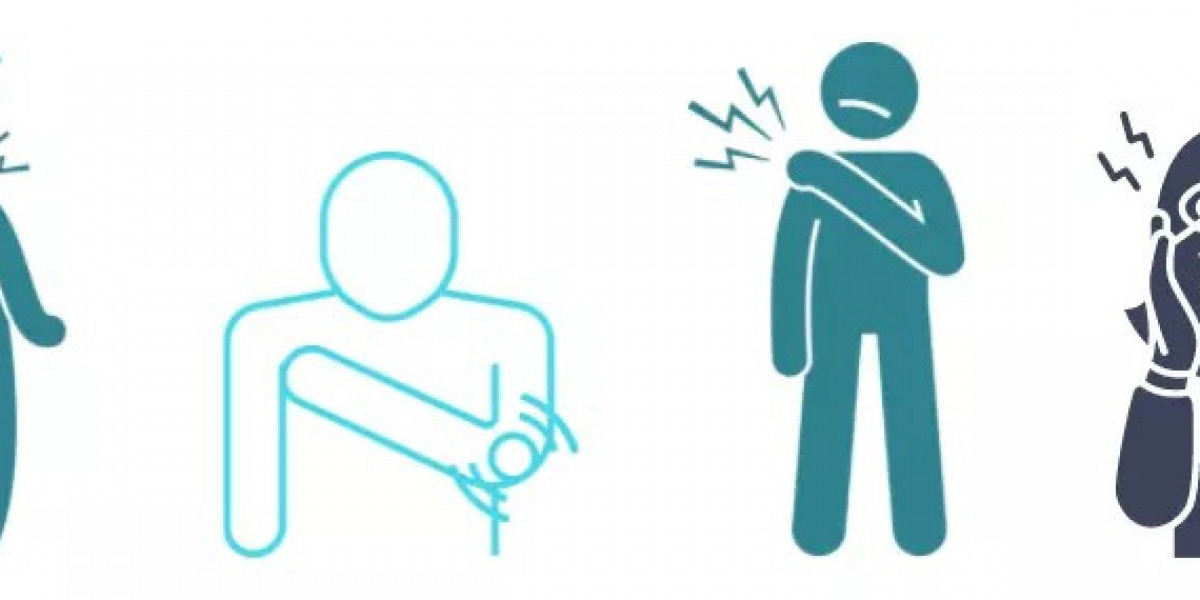Pain, whether it’s a headache or body ache, can significantly disrupt daily life. From tension headaches to muscle soreness, finding effective pain relief methods is essential for maintaining productivity and overall well-being. Fortunately, there are numerous strategies to alleviate pain, ranging from natural remedies to medical interventions. Below, we explore the top pain relief methods for headaches and body pain, including lifestyle changes, home remedies, and medications.
1. Over-the-Counter (OTC) Pain Relievers
One of the most common and effective ways to manage headaches and body pain is through over-the-counter medications. These include:
Ibuprofen (Advil, Motrin): A nonsteroidal anti-inflammatory drug (NSAID) that reduces inflammation and relieves pain. It’s particularly effective for tension headaches, migraines, and muscle aches.
Acetaminophen (Tylenol): A pain reliever and fever reducer that works well for mild to moderate headaches and body pain. It’s gentler on the stomach compared to NSAIDs.
Aspirin: Another NSAID that can help reduce pain and inflammation. It’s often used for headaches and minor body aches.
While OTC medications are widely accessible, it’s important to use them as directed to avoid side effects such as stomach irritation or liver damage.
2. Prescription Medications
For severe or chronic pain, prescription medications may be necessary. These include:
Triptans: Often prescribed for migraines, triptans work by narrowing blood vessels and blocking pain pathways in the brain.
Muscle Relaxants: These are used to relieve muscle spasms and associated pain, often caused by injuries or conditions like fibromyalgia.
Opioids: Reserved for severe pain, opioids are powerful painkillers but come with a risk of dependency and side effects. They should only be used under strict medical supervision.
3. Natural Remedies
For those who prefer a more holistic approach, natural remedies can be effective for pain relief:
Hydration: Dehydration is a common cause of headaches. Drinking plenty of water throughout the day can help prevent and alleviate headaches.
Herbal Teas: Peppermint, ginger, and chamomile teas have anti-inflammatory properties and can soothe headaches and body pain.
Essential Oils: Lavender, peppermint, and eucalyptus oils can be applied topically or diffused to relieve tension headaches and muscle pain.
Cold and Heat Therapy: Applying a cold compress to the forehead can ease migraine pain, while a warm compress or heating pad can relax tense muscles.
4. Lifestyle Changes
Making certain lifestyle adjustments can help prevent and manage pain:
Regular Exercise: Physical activity releases endorphins, the body’s natural painkillers. Activities like yoga and stretching can also reduce muscle tension and improve flexibility.
Stress Management: Stress is a major trigger for headaches and body pain. Techniques like meditation, deep breathing, and mindfulness can help manage stress levels.
Sleep Hygiene: Poor sleep can exacerbate pain. Aim for 7-9 hours of quality sleep each night and maintain a consistent sleep schedule.
Dietary Adjustments: Certain foods, such as those high in sugar, caffeine, or processed ingredients, can trigger headaches. A balanced diet rich in fruits, vegetables, and whole grains can help reduce inflammation and pain.
5. Alternative Therapies
Alternative therapies can provide relief for those who prefer non-pharmaceutical options:
Acupuncture: This traditional Chinese medicine technique involves inserting thin needles into specific points on the body to relieve pain and promote healing.
Massage Therapy: Regular massages can help reduce muscle tension, improve circulation, and alleviate body pain.
Chiropractic Care: Spinal adjustments can relieve tension headaches and back pain by realigning the spine and reducing nerve pressure.
6. Topical Pain Relievers
Topical treatments can be applied directly to the skin to relieve localized pain:
Creams and Gels: Products containing menthol, capsaicin, or NSAIDs can provide targeted relief for muscle and joint pain.
Patches: Pain-relieving patches deliver medication directly to the affected area and can be worn for extended periods.
7. Physical Therapy
For chronic pain conditions, physical therapy can be highly effective. A physical therapist can design a personalized exercise program to strengthen muscles, improve mobility, and reduce pain.
8. Mind-Body Techniques
Mind-body practices can help manage pain by addressing the connection between mental and physical health:
Biofeedback: This technique uses sensors to monitor bodily functions like muscle tension and heart rate, helping individuals learn to control their responses to pain.
Cognitive Behavioral Therapy (CBT): CBT can help individuals reframe their thoughts about pain and develop coping strategies.
9. Hydration and Nutrition
Proper hydration and a balanced diet play a crucial role in pain management. Dehydration can lead to headaches, while certain nutrients, such as magnesium and omega-3 fatty acids, have anti-inflammatory properties that can reduce pain.
10. Noosanta 100mg
For those seeking a pharmaceutical solution, Noosanta 100mg is a medication that has gained attention for its effectiveness in managing pain. Noosanta 100mg contains Flupirtine, a non-opioid analgesic that works by activating potassium channels in the brain, which helps reduce pain signals. It is commonly prescribed for moderate to severe pain, including headaches, muscle pain, and neuropathic pain. Unlike traditional NSAIDs, Noosanta does not have anti-inflammatory properties, but it is effective in providing relief without the risk of gastrointestinal side effects. However, it should be used under medical supervision, as long-term use may affect liver function.
Conclusion
Pain relief is a multifaceted approach that depends on the type and severity of the pain. From over-the-counter medications and natural remedies to lifestyle changes and alternative therapies, there are numerous ways to manage headaches and body pain. For those requiring stronger interventions, prescription medications like Noosanta 100mg can provide effective relief. Always consult a healthcare professional before starting any new treatment to ensure it’s safe and appropriate for your specific condition. By combining these methods, individuals can find a personalized pain management plan that improves their quality of life.









